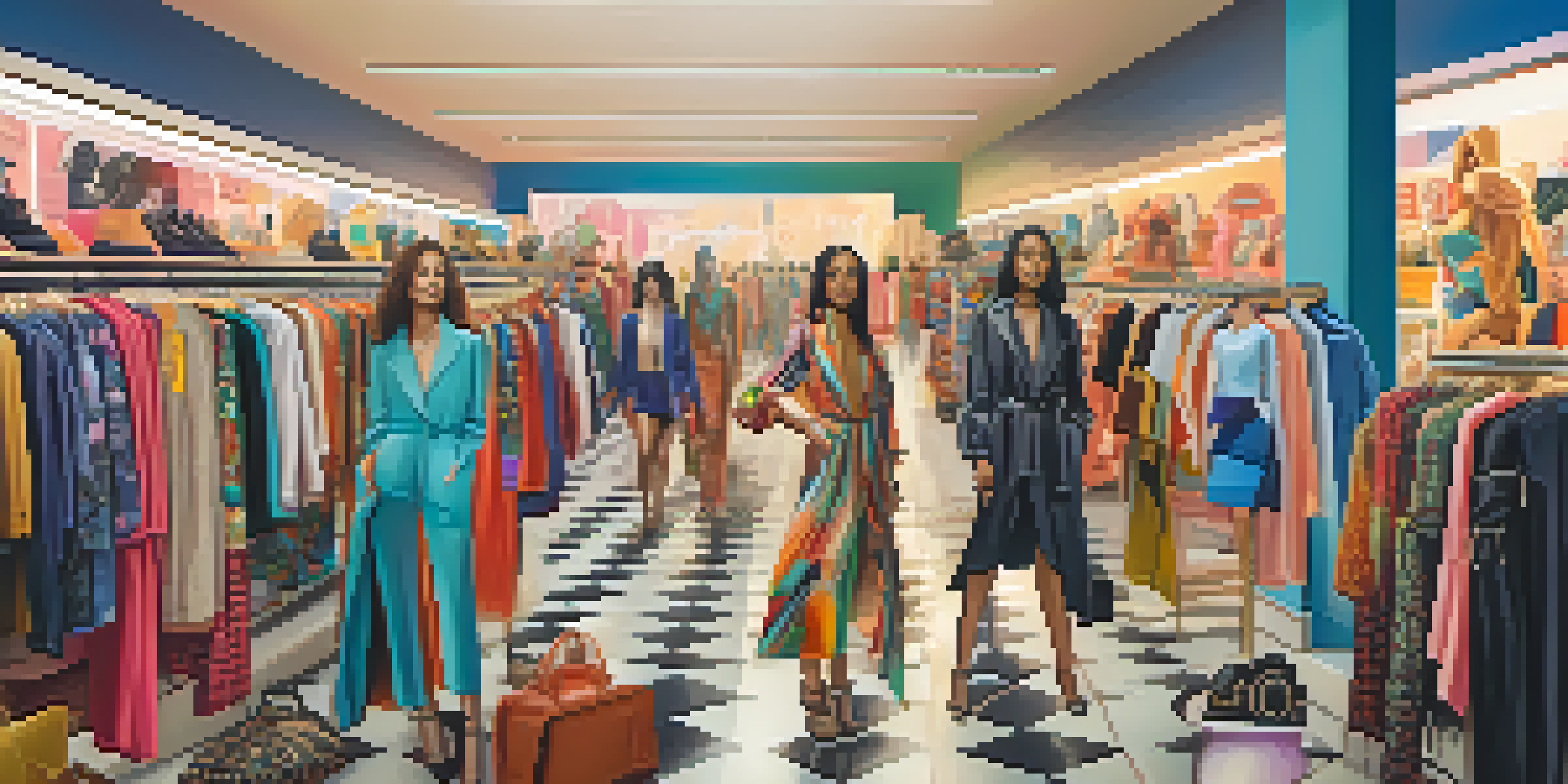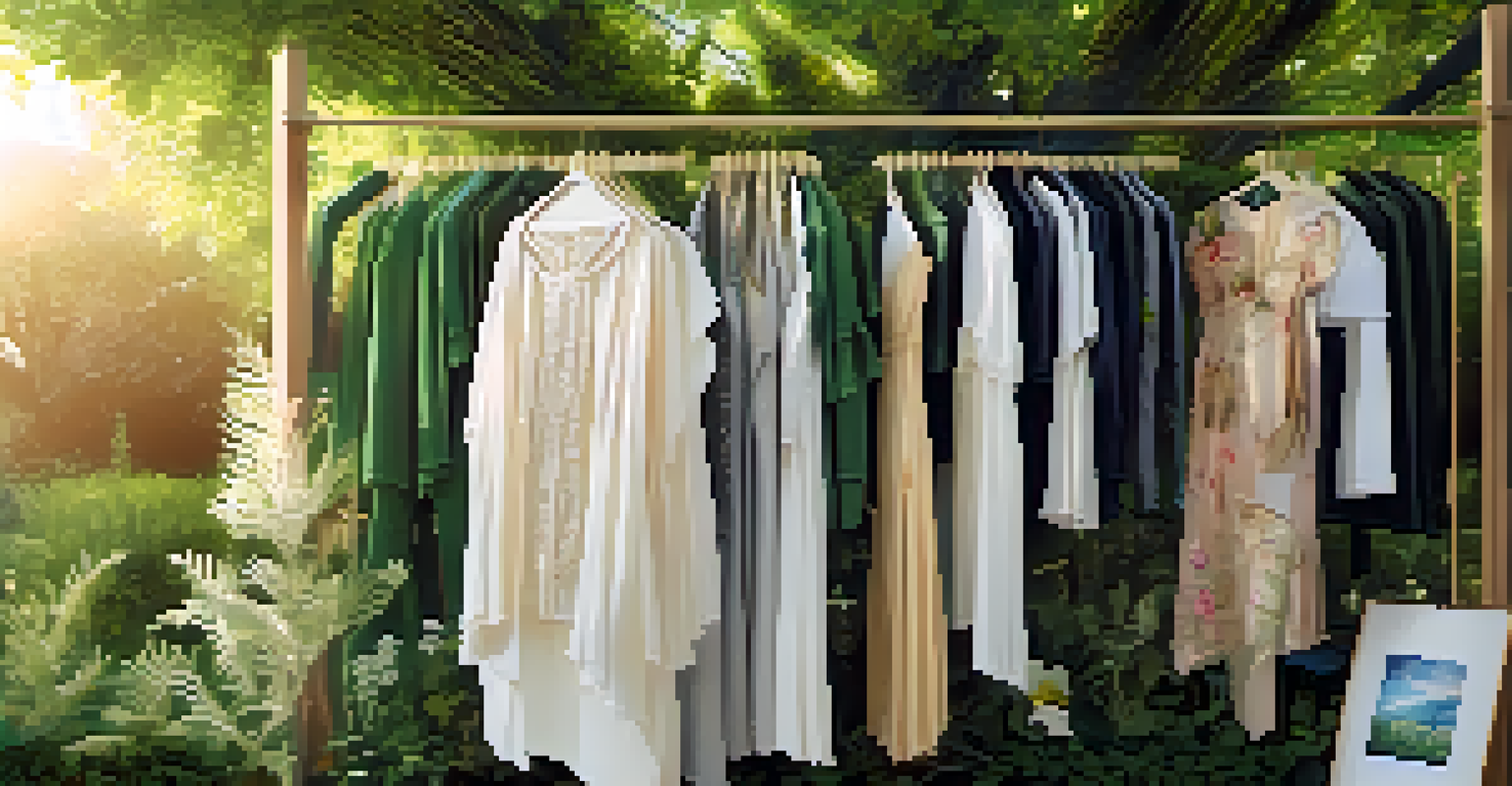Impact of Internet Access on Fashion Trends and Consumer Choices

The Rise of Online Fashion Retailers and Their Influence
The advent of online fashion retailers has transformed the way we shop for clothing. With just a few clicks, consumers can browse extensive collections from around the world, which were previously inaccessible. This convenience has not only changed shopping habits but has also democratized fashion, allowing smaller brands to flourish alongside established names.
Fashion is the armor to survive the reality of everyday life.
As consumers are exposed to diverse styles and trends online, their fashion choices become more eclectic. Social media platforms allow users to discover new influencers and fashionistas whose styles resonate with them. This blend of accessibility and variety encourages shoppers to experiment with their looks, often leading to a unique personal style.
Moreover, the ability to compare prices and read reviews online empowers consumers to make informed decisions. Shoppers can evaluate trends based on real-time feedback, which not only enhances their shopping experience but also puts pressure on brands to keep up with evolving consumer preferences.
Social Media's Role in Shaping Fashion Trends
Social media platforms like Instagram and TikTok have become vital in dictating fashion trends. Influencers and celebrities showcase their outfits to millions, creating a ripple effect that can turn a simple look into a global phenomenon overnight. This instantaneous sharing of styles has made fashion more dynamic than ever.

The power of hashtags and viral challenges allows trends to spread rapidly, making it easier for consumers to find and adopt new styles. For instance, trends such as 'cottagecore' or 'dark academia' emerged through social media platforms, inspiring countless followers to embrace these aesthetics. This phenomenon illustrates how the internet serves as a catalyst for fashion evolution.
Online Shopping Revolutionizes Fashion
The rise of online fashion retailers has transformed shopping habits, allowing consumers to access diverse styles and brands with ease.
However, this rapid trend cycle can lead to a sense of urgency among consumers, driving them to purchase items quickly, often referred to as 'fast fashion.' While this may satisfy immediate desires, it raises questions about sustainability and the long-term impact on the environment.
The Role of Online Communities in Fashion Choices
Online communities and forums have become a haven for fashion enthusiasts to share ideas, tips, and inspiration. Platforms like Pinterest allow users to create boards filled with outfits and styles that resonate with their personal taste. This collaborative space fosters creativity and provides endless inspiration for individuals looking to refine their wardrobe.
Sustainability is not a trend; it is a responsibility.
These communities also enable discussions around various fashion topics, such as ethical clothing and sustainable practices. As consumers become more aware of the impact of their choices, they often seek out brands that align with their values. This shift towards conscious consumerism is largely driven by the information shared within these online groups.
Additionally, members of online communities often support each other in their fashion journeys, celebrating individuality and unique styles. This sense of belonging can enhance a person's confidence and willingness to explore new fashion avenues they might not have considered otherwise.
Impact of E-commerce on Consumer Spending Habits
E-commerce has significantly influenced consumer spending habits, making it easy to shop anytime and anywhere. The convenience of online shopping means that consumers are more likely to make impulse purchases, often leading to a higher overall spend on fashion items. Retailers capitalize on this by offering flash sales and limited-time discounts to encourage quick buying decisions.
Moreover, the ability to shop from multiple retailers simultaneously gives consumers a sense of power. They can easily compare prices and styles, ensuring they get the best deal for their money. This increased competition among brands has also led to better pricing strategies and promotions, benefiting the shopper.
Social Media Drives Trend Evolution
Platforms like Instagram and TikTok amplify fashion trends rapidly, fostering a dynamic and ever-changing fashion landscape.
However, while e-commerce enhances accessibility, it can also contribute to overconsumption. The ease of acquiring new items may lead to a greater volume of clothing purchases, which raises concerns about waste and the lifecycle of fashion products. As consumers become more aware of these issues, many are now advocating for a more mindful approach to shopping.
The Influence of Mobile Technology on Fashion Trends
The rise of smartphones has revolutionized how consumers engage with fashion. Mobile technology allows users to browse, shop, and share fashion content on the go, making it easier than ever to stay updated with the latest trends. With mobile apps and responsive websites, shoppers can enjoy a seamless experience, encouraging more frequent purchases.
Additionally, mobile technology has enabled augmented reality (AR) applications that allow users to try on clothes virtually. This innovative approach bridges the gap between online shopping and the tactile experience of trying items in-store. By reducing the uncertainty often associated with online purchases, consumers feel more confident in their choices.
As mobile technology continues to evolve, we can expect even more integration of fashion and tech. Innovations such as AI-driven recommendations and personalized shopping experiences are likely to shape the future of consumer choices, making fashion even more tailored to individual preferences.
Sustainability and Ethical Fashion in the Digital Age
With the rise of the internet, consumers are more informed than ever about sustainability and ethical fashion practices. Online platforms provide a wealth of information about the environmental impact of clothing production, encouraging shoppers to make more conscious choices. Brands that prioritize sustainability can connect with this conscious consumer base through transparent marketing and storytelling.
Social media has also played a pivotal role in highlighting ethical fashion initiatives, helping to create awareness and drive change. Campaigns focusing on slow fashion and fair labor practices gain traction, influencing the purchasing decisions of millions. This shift towards ethical consumption is not just a trend; it reflects a fundamental change in consumer values.
Sustainability Shapes Consumer Choices
Consumers are increasingly prioritizing sustainability and ethical practices in their fashion purchases, influenced by online information and social media.
However, while many brands are integrating sustainability into their practices, there is still a significant challenge with greenwashing. Consumers must navigate this landscape carefully, ensuring that the brands they support genuinely uphold their claims of sustainability. The internet serves as both a tool for awareness and a battleground for transparency in the fashion industry.
The Future of Fashion in a Hyper-Connected World
As internet access continues to expand globally, the fashion landscape will likely evolve even further. Emerging markets are becoming more connected, presenting new opportunities for brands to reach diverse audiences. This connectivity will foster a melting pot of styles and trends, enriching the global fashion narrative.
Additionally, advancements in technology, such as blockchain and artificial intelligence, are set to revolutionize the industry. These technologies can improve supply chain transparency and enhance personalization in shopping, providing consumers with a more tailored experience. As brands adapt to these changes, consumer expectations will also shift, driving innovation.

Ultimately, the impact of internet access on fashion trends and consumer choices is profound. As we navigate this hyper-connected world, the fusion of technology and fashion will continue to shape how we express ourselves through clothing, making it an exciting time for both consumers and brands alike.